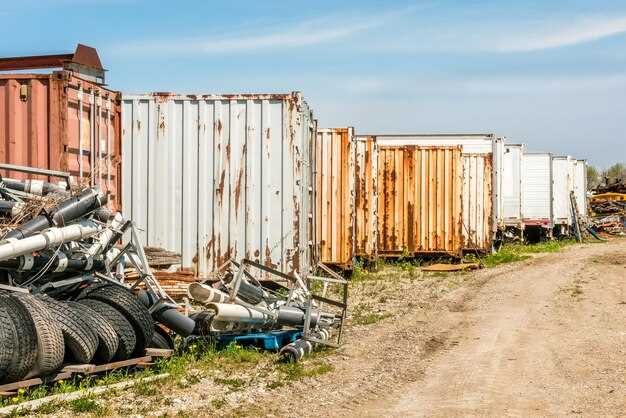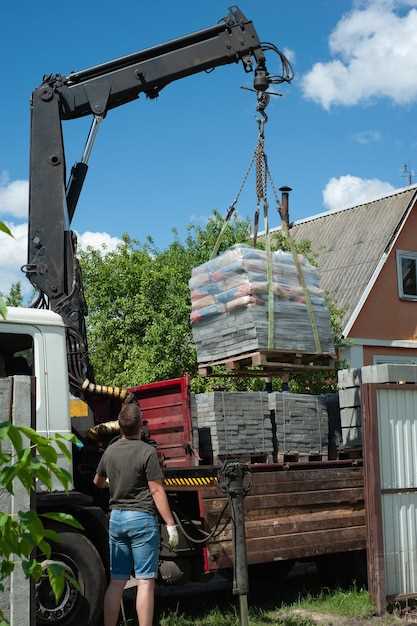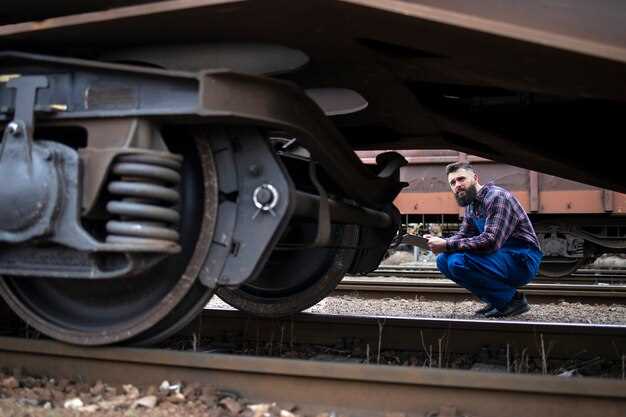
When it comes to transporting heavy parts from a salvage yard, safety should always be the top priority. These operations often involve substantial risks, especially when dealing with large components that require specialized equipment to pull and hoist effectively. Understanding the proper techniques and tools can make the difference between a smooth operation and a potentially hazardous situation.
Utilizing a hoist is essential for securely lifting heavy parts without compromising safety. Hoists come in various types, including manual and electric, each designed to handle specific loads. Properly assessing the weight and dimensions of parts before using a hoist ensures that it can accommodate the job without exceeding its limits.
Equally important is the method of pulling the parts once they are hoisted. Careful planning, including the selection of appropriate rigging equipment and securing methods, is crucial for preventing accidents. Ensuring that all team members are familiar with the safety protocols further enhances the level of protection during the transportation process.
Choosing the Right Hoist for Engine Pulls

When pulling an engine from a vehicle, selecting the appropriate hoist is crucial for both safety and efficiency. There are several types of hoists available, each with different specifications and intended uses. Understanding your needs will help you make the right choice.
The most common type of hoist for engine pulls is the hydraulic engine hoist. This hoist uses hydraulic power to lift heavy engines with ease, providing a significant advantage in terms of leverage and control. Look for a hoist that offers a lift capacity suitable for the specific weight of the engine you plan to remove. Most car engines weigh between 400 to 600 pounds, so ensure your hoist can handle this range comfortably.
Consider the reach and height of the hoist as well. The engine must be lifted high enough to clear the vehicle’s frame and be maneuverable for your workspace. Choose a hoist that offers adjustable boom lengths and a good height range, allowing for flexibility during the pulling process.
Stability is another factor to consider. A hoist with a wider base will provide better stability and reduce the risk of tipping over during lifting. Some models come with locking casters that allow you to move the hoist around while still maintaining its position when lifting.
It’s also essential to examine the features such as swivel hooks and safety latches, which can enhance usability and security when handling heavy parts. Additionally, consider the weight of the hoist itself. A lightweight model may be easier to maneuver but may trade off stability and strength.
Finally, always prioritize quality over cost when investing in a hoist. A reliable hoist built from durable materials will ensure safe and efficient engine pulls. By taking the time to research and choose wisely, you can significantly improve your safety while maximizing workflow in the salvage yard.
Securing the Load: Best Practices for Transportation
When transporting heavy parts from a salvage yard, securing the load is crucial to ensure safety and prevent damage. One of the primary methods for securing heavy loads is using a hoist to lift and stabilize the parts before movement. A hoist allows for precise lifting and positioning, reducing the risk of shifting during transportation.
Once the load is lifted, it’s essential to use high-quality straps or chains to secure the parts to the transport vehicle. Properly rated tie-downs should be used to withstand the weight and prevent any movement. Ensure that the straps are tightened sufficiently without causing deformation to the parts. Utilizing a combination of vertical and horizontal pulls can distribute the weight evenly and enhance stability.
In some cases, utilizing support structures within the transport vehicle can offer additional security. Using wooden blocks, bracing materials, or custom-designed cradles can prevent the load from rolling or sliding. Always check the integrity of these supports before loading the parts.
It is also important to monitor the weight distribution across the transport vehicle. An uneven load can lead to handling difficulties, making it unsafe during transportation. Adjusting the position of the load as necessary will facilitate better control while on the move.
Finally, performing a comprehensive pre-trip inspection can save time and prevent accidents. Double-check all securing mechanisms and the condition of the transport vehicle. By following these best practices, securing heavy parts for transportation becomes a manageable task, ensuring safety for both the load and the transport crew.
Safety Protocols During Heavy Part Handling

When handling heavy parts such as engines in a salvage yard, it is crucial to follow stringent safety protocols to prevent accidents and injuries. Utilizing a hoist is one of the most effective methods for lifting and moving heavy components safely.
Before beginning any operation, ensure that the hoist is properly inspected for defects or damage. Check for functioning parts, such as the cables, hooks, and controls, to guarantee they are in optimal condition. Always use the hoist within its rated capacity to avoid mechanical failure.
Workers should wear appropriate personal protective equipment (PPE), including hard hats, gloves, safety goggles, and steel-toed boots. This gear protects against potential hazards from falling objects or sharp edges that may be present during heavy part handling.
Establish a clear communication protocol among team members involved in the lifting process. Use signals or verbal cues to ensure everyone is aware of the movements being performed. This reduces the risk of misunderstandings that could lead to accidents.
Plan the lift meticulously before executing it. Identify potential obstacles and ensure that the area where the engine will be relocated is clear of debris or other hazards. Having a designated path for transporting the parts can further enhance safety.
In case of an emergency, it’s vital to have a plan in place. All workers should be familiar with emergency procedures, including how to shut down the hoist instantly if needed. Regular training sessions on safe lifting techniques and equipment operation can also contribute significantly to workplace safety.
Finally, encourage a culture of safety where workers feel obligated to report unsafe conditions or practices without fear of repercussions. This proactive approach helps maintain a safe working environment for everyone involved in the handling of heavy parts.
